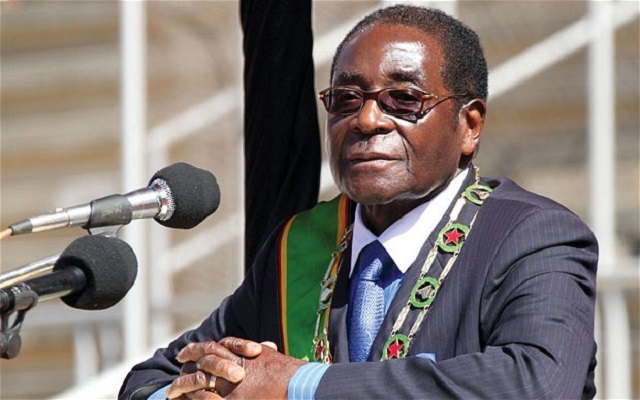‘Disasters have made Govt wiser for need to prepare’

Mabasa Sasa recently in CANCUN, Mexico
NATURAL and man-made disasters that Zimbabwe has experienced in recent years have made Government wiser to the need to prepare for such exigencies, President Mugabe has said.
President Mugabe spoke as he addressed the media on arrival at Harare International Airport yesterday from Cancun, Mexico where he attended the United Nations Global Platform on Disaster Risk Reduction.
The President was accompanied by ministers Simbarashe Mumbengegwi (Foreign Affairs), Saviour Kasukuwere (Local Government, Public Works and National Housing) and Oppah Muchinguri-Kashiri (Environment, Water and Climate), and senior Government officials.
President Mugabe joined his colleagues for the closed-door Leaders Forum aspect of the Global Platform, and it was there that experiences and advice was shared on disaster risk reduction.
Briefing the media on those exchanges, President Mugabe said, “Each country had an opportunity to state what it is doing.
“We had a leaders’ meeting where I stated what we had tried to do, and also informed them about the hazards we had like floods, drought; and measures we have been taking against drought to prevent our people from dying of hunger.
“In respect of floods, we were not prepared but they have awakened us to the need not to have homes on the peripheries or in water ways like what our people were doing. We have to ensure through the ministries of Local Government, Water, and Rural Development that we take correct measures not only to assist those affected by floods, but also take preventive measures.”
The President however said the meeting was not so much to discuss the measures that the countries had taken when calamities struck us but to anticipate the calamities.
He said it was a meeting of risk reduction so that countries could always stay ready.
The President said while natural disasters had made Government wiser, the country was still to fully appreciate the importance of curbing man-made disasters.
“We have to take similar (risk reduction) steps and widen the roads so that we lessen road traffic disasters. We can’t say they will absolutely disappear but we can reduce them; that is anticipating the risk.”
President Mugabe was welcomed at Harare International Airport by Vice-Presidents Emmerson Mnangagwa and Phelekezela Mphoko, Cabinet ministers and other senior Government officials, and service chiefs.
Zimbabwe has since 2015 registered significant progress in meeting the requirements of the Sendai Framework – which informed deliberations at the Cancun meeting that seeks to boost countries’ resilience in the face of disasters.
The Sendai Framework sets out seven targets to improve livelihoods in a sustainable manner by building resilience to disasters, also referred to as the 2030 Agenda.
Zimbabwe has focused on understanding disaster risk; strengthening disaster risk governance; investing in disaster risk reduction for resilience; and enhancing disaster preparedness for effective response and to “Build Back Better” in recovery, rehabilitation and reconstruction.
President Mugabe’s Government has integrated these approaches into implementation of the Zimbabwe Agenda for Sustainable Socio-Economic Transformation, whose implementation is aligned to the UN Sustainable Development Goals.
Also, the Civil Protection Act is being amended in keeping with prevailing international frameworks for disaster risk reduction and in response to climate change.
Furthermore, Zimbabwe is fine tuning an all-inclusive Flood Plain Management Framework, which is a component of the Disaster Risk Reduction National Action Plan (2015-2030).
Other interventions include development of a Disaster Risk Management Manual while the updated education curriculum incorporates disaster risk management in National Heritage Studies as a subject up to tertiary level.
However, Zimbabwe’s 215-2030 National Plan of Action has been hamstrung by inadequate resources to buy modern weather observation equipment, vehicles for emergency response, irrigation development and animal disease control.











Comments